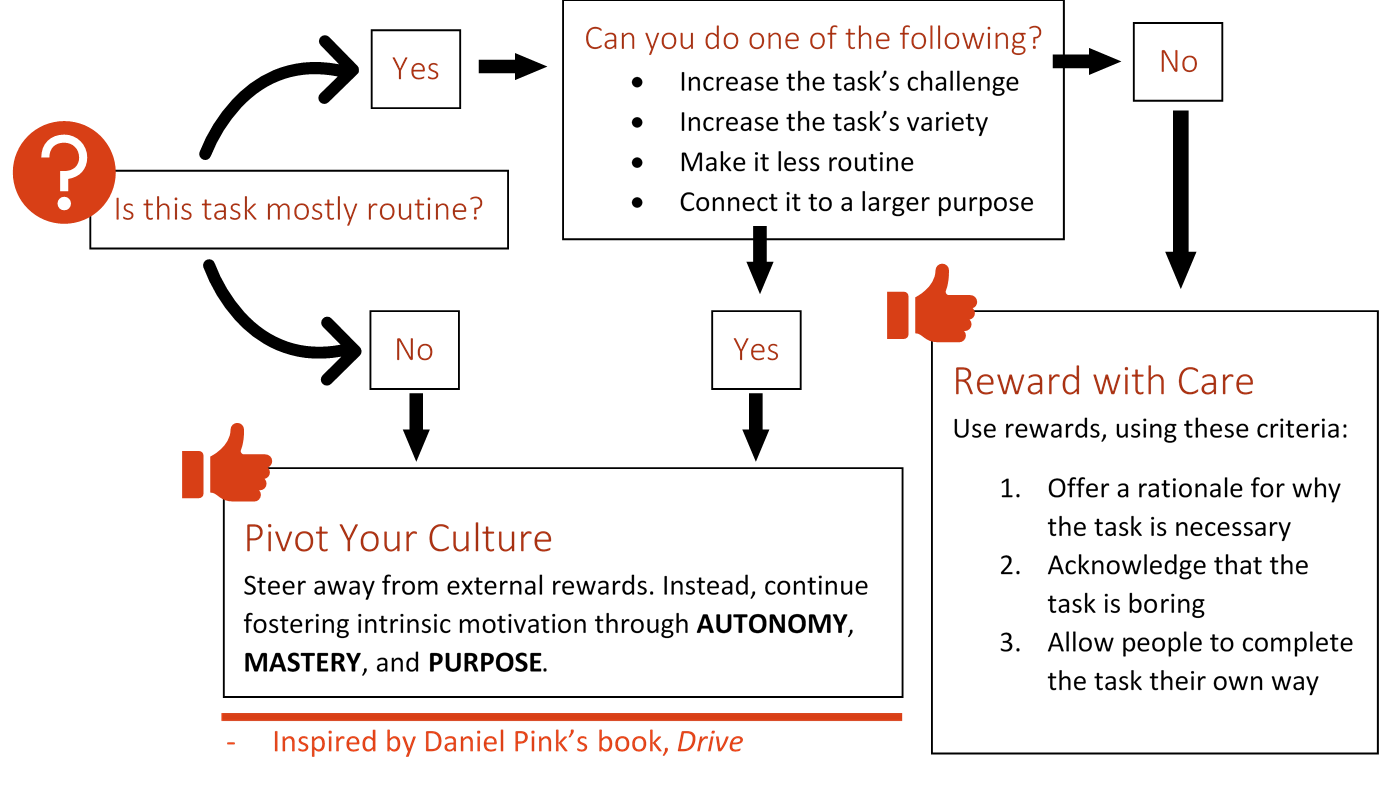When and How to Use External Rewards
Posted on June 14, 2018 by Jonathan Mills
Knowing how to motivate employees is critical. Using an inappropriate method or the right method at the wrong time can yield poor results, no results, or negative results. In the worst cases, failure to properly motivate can demoralize your employees and reduce employee retention. However, with a little knowledge and forethought, your motivation practices can become a competitive edge that maximizes employee retention and brands you as a great place to work.
External Rewards (“Type X” Motivation)
Organizations often use simple external reward programs (or punishments) when they need to motivate employees. Gifts, restaurant cards, and recognition plaques serve as accessible examples for this approach. They tend to be relatively low cost, too, which only makes them more attractive. Employees under offered these rewards are filled with a temporary burst of energy that drives them toward a narrow goal, but a strategic perspective reveals some serious flaws:
- They are exceptions-based, leaving most employees unmotivated and discouraged
- The motivation is short-term and minimally productive
- The program’s effect can be different from its goal
- Employees tend to form dependencies, leading to poor performance after the program ends
- Reward programs can lead to risks like unethical behavior, cutting corners, and missed opportunities or alternatives
Despite these potential risks there is a time and place for rewards. You need to know when and how to use them to avoid missing opportunities to combat discouragement, create engagement, and maximize employee retention. Here is a diagram that will help you determine when and how reward programs are appropriate.

Intrinsic Motivation (“Type I” Motivation)
Type I is a system where motivation comes from employees themselves. Instead of depending on rewards, they learn to be driven by personal enjoyment, ambition, well-being, challenge, community, and other internal motivations. Type I succeeds where Type X (external motivation) can’t, creating broadly-felt, long-term motivation. As an employer, your role is to foster an environment where this is not only unrestricted but encouraged. There are three tenants that will help you do so: autonomy, mastery, and purpose. Learn more here.
But how do you move from Type X to Type I? Here are some practical things you can do to change.
- Shout-Outs and Storytelling: Encourage employees to write down their experiences at work and send positive encouragement to coworkers. This is a great transitional reward system. It provides a small-scale, unexpected external reward with substantive intrinsic benefit. That will help employees mentally transition from external to internal rewards.
- Relationship Building: Taking occasional time from the workday for social experiences is an external reward with real internal benefit. Consider giving teams discretionary funds for meals or coffee. Encourage them to go out for lunch after completing a difficult project, or to grab coffee while brainstorming. Employees will feel more appreciated and free without waiting for recognition. It also allows them to practice autonomy without feeling guilty for doing so.
- Purpose Driven Tasks: Describe how each of your various activities aligns with a more profound purpose. This ideally points to your corporate values, but can also align with something more unique to your current goals. This helps increase and maintain your employee’s sense of purpose.
- Skill Growth and Community Opportunities: Create ways to connect your employees with training opportunities and skilled communities of professionals—send them an article, invite speakers, do research on trending technology, etc. Doing the footwork (which is often free) removes a barrier for your employees, making access to new information and methods easier. This goes a long way toward fostering mastery.
- Minimal Management: Engaged employees need little management. Reduce micro-management and control over employees, instead opting for a flatter organization. Identify the minimal management practices needed to maintain operations, while at the same time increasing employee self-direction. Emphasize that employees can be self-directed and autonomous.
Pivot the way you think about motivating employees, seeing it on a spectrum between external and internal rewards. Knowing that there is a time and a place for external rewards, realize that the vast majority of employee motivation should come from employees themselves. Your responsibility is to foster that motivation through autonomy, mastery, and purpose. You will see your employee retention increase, employment brand improve, productivity improve, and opportunities found. Don’t underestimate the power of intrinsic motivation.

